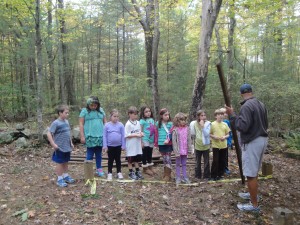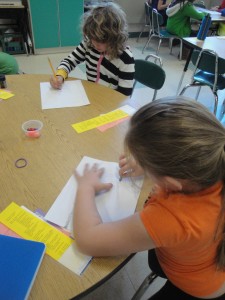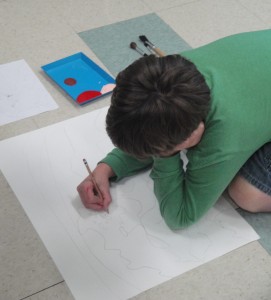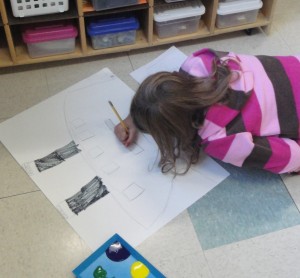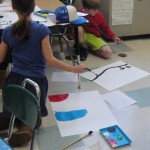
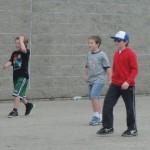
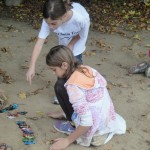
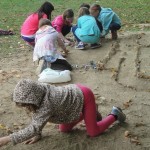 We have completed all the NECAP testing for this year. The class worked to finish all six of the tests to the best of their abilities. In general we are glad they are completed, but some of the children will miss the quiet time drawing and thinking. Some of them will miss the concrete doneness of questions with a single answer and no teacher to prod them on to more thinking, elaboration and details. No one will miss the confusing wording without being able to ask for clarification.
We have completed all the NECAP testing for this year. The class worked to finish all six of the tests to the best of their abilities. In general we are glad they are completed, but some of the children will miss the quiet time drawing and thinking. Some of them will miss the concrete doneness of questions with a single answer and no teacher to prod them on to more thinking, elaboration and details. No one will miss the confusing wording without being able to ask for clarification.
Description and Details
– Working to Develop our Writing
This week we have been thinking about our writing and looking at it more closely. We are learning what adding detail and description looks like in writing. We are learning about strong verbs and how to change voice by taking a different perspective. Of course we are just in the beginning stages of this work and many in the class are not sure how to purposefully revise their drafts, but we will get there over the course of the year.
Most days as we take the status of the class the students tell what they think they are working on and are going to put thought toward in this writing session. Here are a few examples of the engaging leads, description and detail, voice and efforts to choose unusual and interesting words. These excerpts are from pieces of narrative writing the children have worked on this week. I have tried to use different text formats so you can tell one student from another. The blog doesn’t give different font options.
Bo-bo was bored and had absolutely nothing to do. He went outside to get some nice fresh air and started to take a stroll. When he got to the other side something ZOOMED right past Bo-bo and ran into the woods.
James gets into a lot of trouble. His owners say don’t get into stuff. “No human food for you, James.” Meow. That’s right.
The best thing about having two dogs is playing fetch and going for a walk.
Pete loved the nest. He loved the ferns that made it warm.
This is a story about my life and how I got my forever home. We were born in a mill- cage 6, batch 3. I have three brothers and three sisters including me. My name is Crystal.
Word choice from Why?: spectacular, interesting, curiosity, majestic
Winter 1912 Sunday
We are in the house and Pa just lit the fire. Ma is lying on the warm rug. She will have her baby any day now. Pa said that we will not be going to church because the horses, Shadow and Lily, are not strong enough to pull the wagon through the snow and Pa won’t take the chance with Ma having the baby soon. Why? I wonder.
Isn’t it fun to get a glimmer of the variety and voice of the different student writers in class? We can see how they are influenced by what they are reading and listening to as well. We are a class that enjoys writing and creating stories.
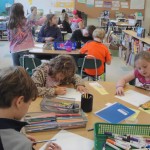
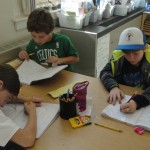
Exploring Science
This week we explored ways a scientist would write as we attempted to create a full explanation of our Raisin Experiment. We worked to be concise and specific. It was challenging to remove some of our more poetic descriptions “floating up and down, up and down as if they were dancers defying gravity.” What a great image, but that is not what how a scientist would express the process. We are working on that and it means learning more about how and why things happen.
We are learning terms like buoyancy and carbon dioxide so that we can understand the cycle of the experiment. Our next step is to use the information we learned in our first experiment, to conduct a second experiment to see what will happen with a wider variety of objects. We will use what know to make detailed predictions and then record our observations again, eventually writing a conclusion.
Observing a process right in front of us is different than learning about something we live with but cannot see. This week we read two different books describing how and why the seasons happen for us on earth. We read The Reason for the Seasons by Gail Gibbons and Sunshine Makes the Seasons by Franklyn M. Bramley, along with the four season poems written by Lily to compare genres and to consider how we learn from different types of texts. We will be using this seasons thinking to write a short persuasive piece to see if we can convince others to change their minds and select our favorite season over theirs.
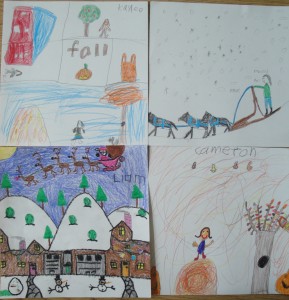
Bits and Pieces:
Of course we are also solving math problems each day and working to solidify our understanding of place value through the ten thousands and work to develop ever-more efficient strategies for addition and subtraction. We have been challenged to find half when working with odd amounts: 500, 90 or 7,000 for example. Our numbers of the week this week were 343 students at NHS and 4,301 residents of North Hampton according to the 2010 census.
Our read- aloud for these last two weeks has been Marty McGuire by Vermont author, Kate Messner. We are enjoying the story of the class play and how frog-loving Marty has been cast in the princess in The Frog Prince. We will be working on a digital writing project to post on our blog so be on the lookout.
We’ll be celebrating National Food Day – October 24
We have an outdoor challenge (weather permitting) on October 24
Harvest Fest is Friday, October 25
Have a great weekend. 3E
 Choose one of these numbers: 2,3,5, or 6. Double the number you chose and then double the sum. Keep doubling until you get a sum that is greater than 1,000. How close to 1,000 is the number you reached.
Choose one of these numbers: 2,3,5, or 6. Double the number you chose and then double the sum. Keep doubling until you get a sum that is greater than 1,000. How close to 1,000 is the number you reached. Hank Wolowitz is starting 4th grade alone. His best friend has moved away, and Hank had resigned himself to the fact that this was going to be the worst year ever. Then he met Inkling. Inkling is a bandapat and bandpats are invisible. They’re soft and silky, about the size of a small dog and can talk. Hank found him at his family’s ice cream shop while investigating the disappearance of a floating waffle cone. Bandapts are always hungry. Their favorite food is squash – acorn, butternut or pumpkin. Pumpkin is their favorite which is why Inkling was there. It was logical to think that a place named “Big Round Pumpkin” would have everything a bandapt would need, but no. There is no squash at Big Round Pumpkin and the Wolowitzes are not squash fans, but Hank does his best. He and Inkling become pretty good friends as Hank figures out a way to deal with Gillicut who has it in for him after scoring a goal for the other team. Nothing is easy for Hank and Inkling. You’ll laugh and nod with understanding. It’s not easy to be in 4th grade with an invisible friend.
Hank Wolowitz is starting 4th grade alone. His best friend has moved away, and Hank had resigned himself to the fact that this was going to be the worst year ever. Then he met Inkling. Inkling is a bandapat and bandpats are invisible. They’re soft and silky, about the size of a small dog and can talk. Hank found him at his family’s ice cream shop while investigating the disappearance of a floating waffle cone. Bandapts are always hungry. Their favorite food is squash – acorn, butternut or pumpkin. Pumpkin is their favorite which is why Inkling was there. It was logical to think that a place named “Big Round Pumpkin” would have everything a bandapt would need, but no. There is no squash at Big Round Pumpkin and the Wolowitzes are not squash fans, but Hank does his best. He and Inkling become pretty good friends as Hank figures out a way to deal with Gillicut who has it in for him after scoring a goal for the other team. Nothing is easy for Hank and Inkling. You’ll laugh and nod with understanding. It’s not easy to be in 4th grade with an invisible friend. Once you finish the first, you’ll certainly want to find out what happens in the second, Invisible Inkling – Dangerous Pumpkins because Halloween is a time for pumpkins. They’re everywhere and Inkling has a hard time leaving people’s jack-o-lanterns alone.
Once you finish the first, you’ll certainly want to find out what happens in the second, Invisible Inkling – Dangerous Pumpkins because Halloween is a time for pumpkins. They’re everywhere and Inkling has a hard time leaving people’s jack-o-lanterns alone.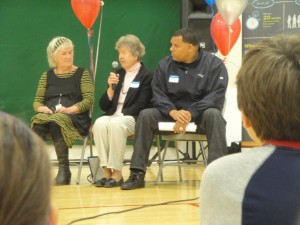
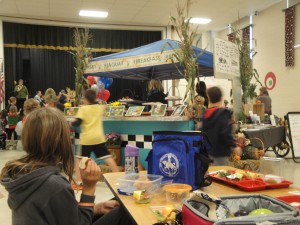
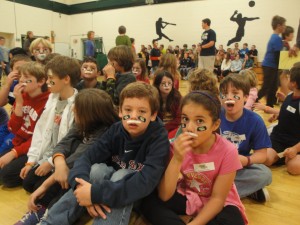

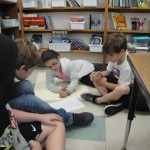

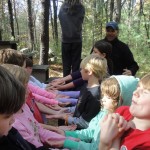
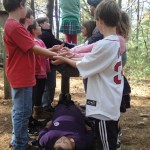
 The world surely is full of amazing and wonderful things. There is so much to learn and think about. The first book I wanted to share is
The world surely is full of amazing and wonderful things. There is so much to learn and think about. The first book I wanted to share is 


 Nicola Davies is a zoologist as well as an author. She has written so many interesting books like
Nicola Davies is a zoologist as well as an author. She has written so many interesting books like  The most different book – well at least most different for our classroom – is
The most different book – well at least most different for our classroom – is 












